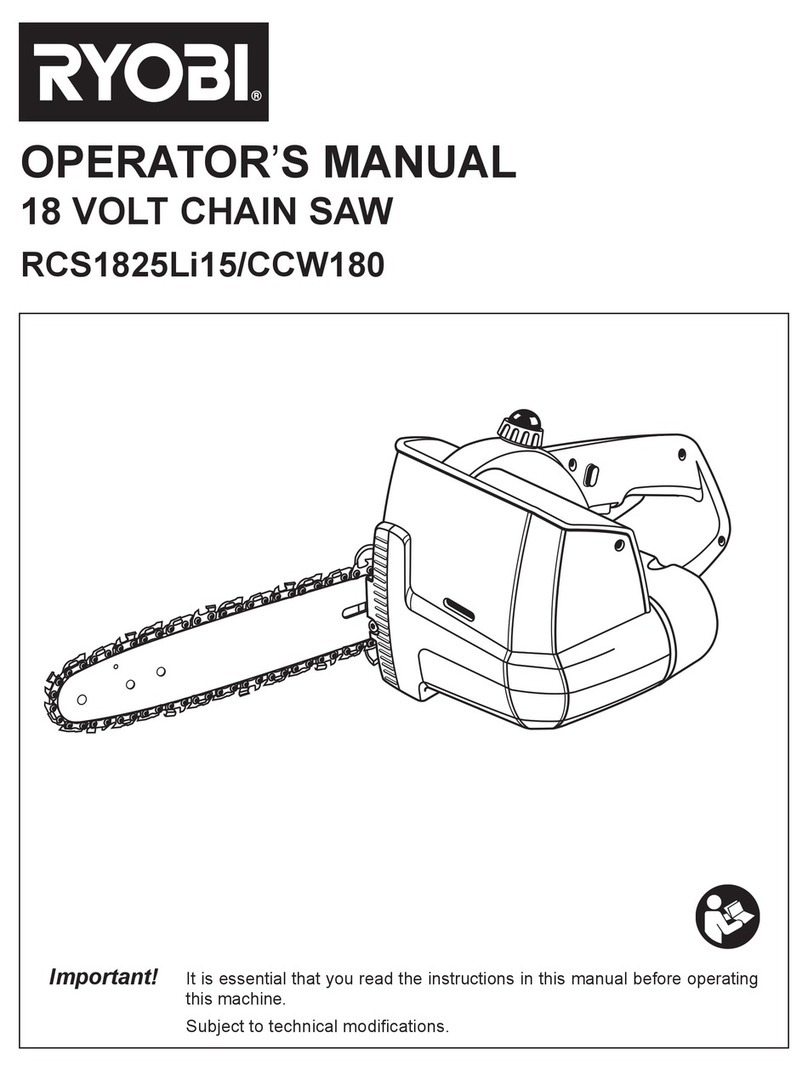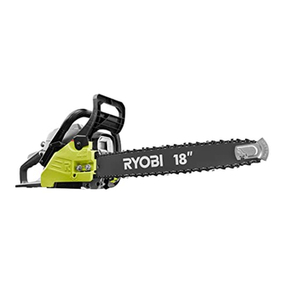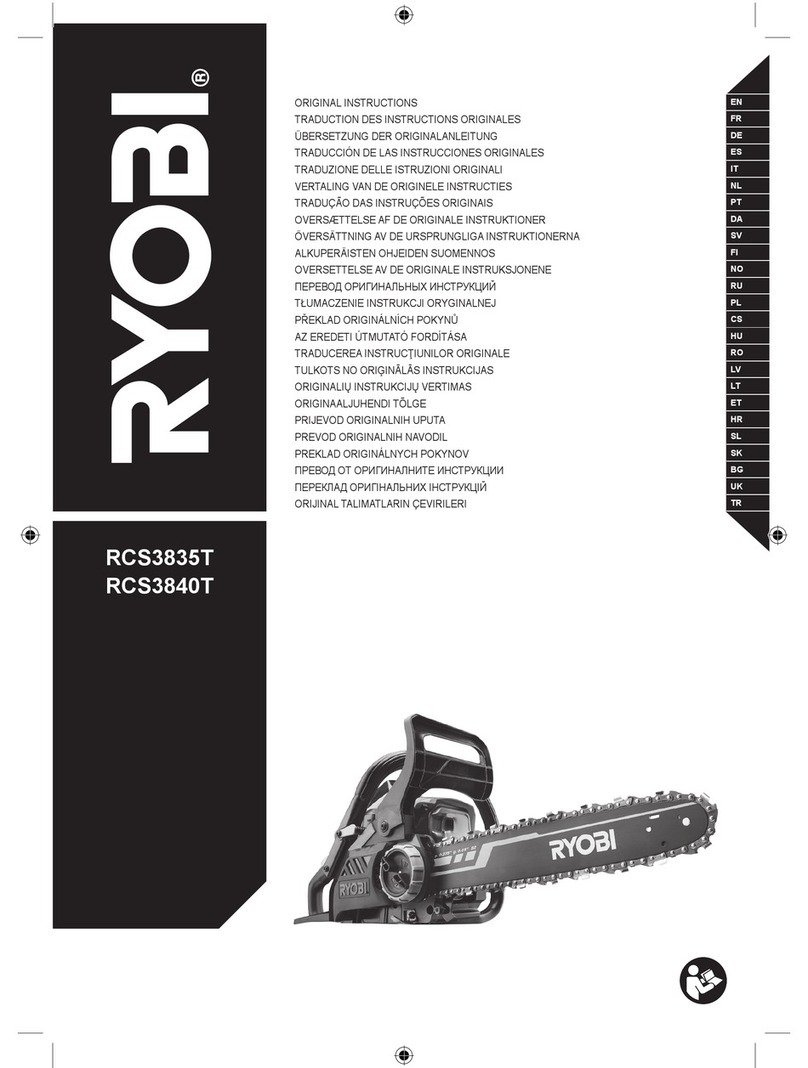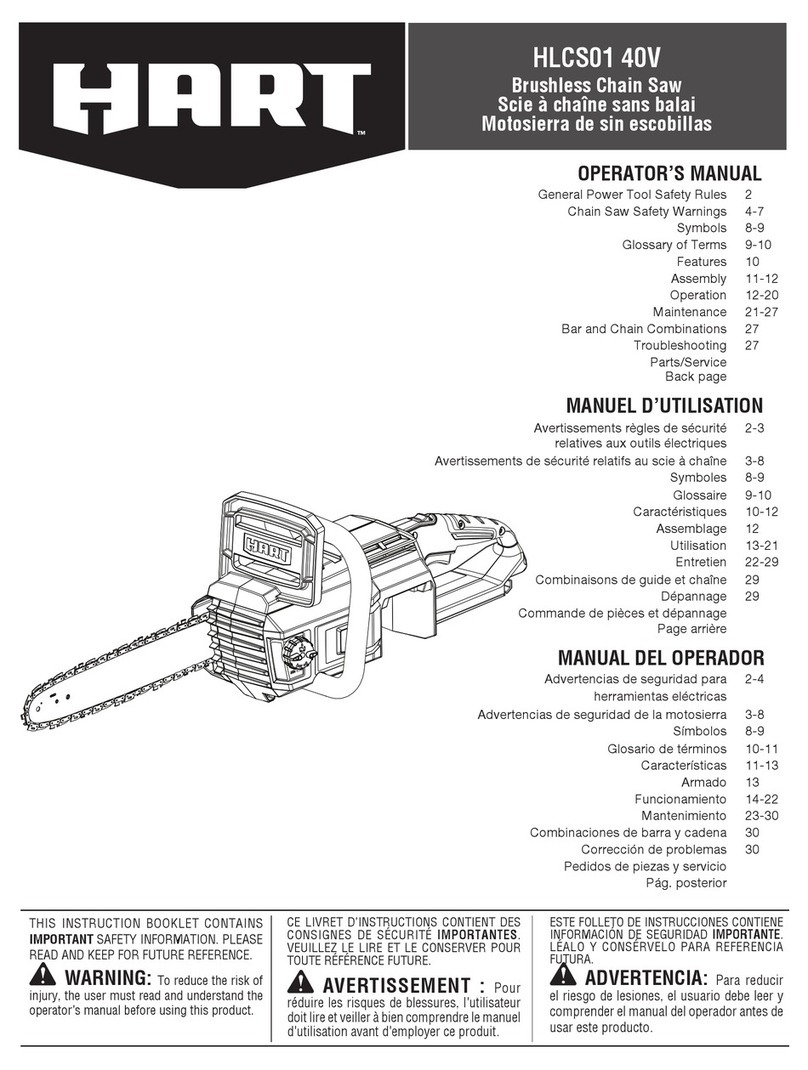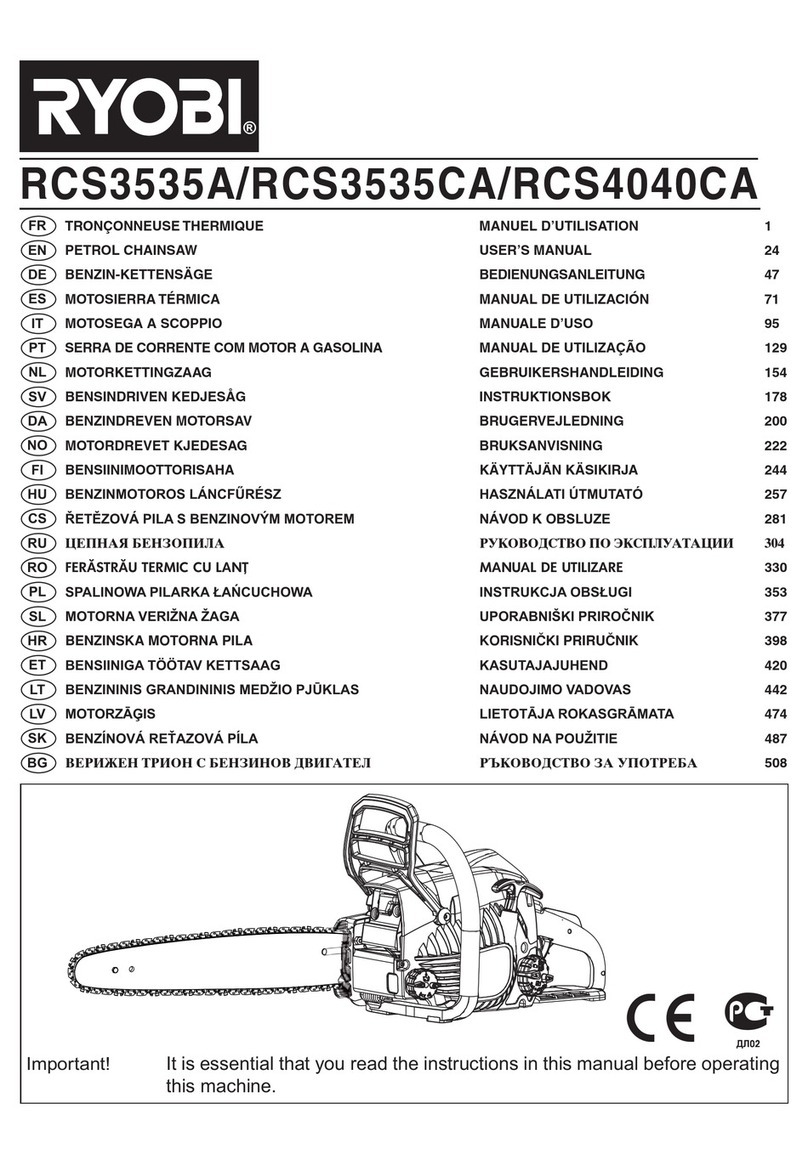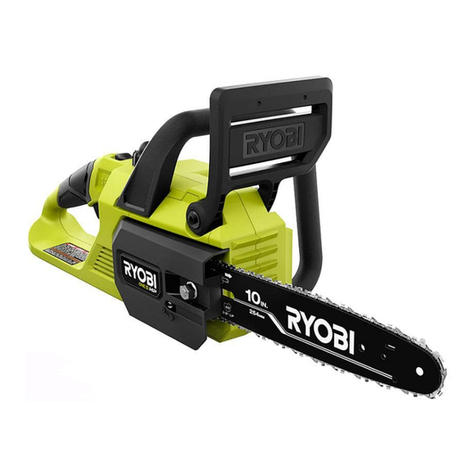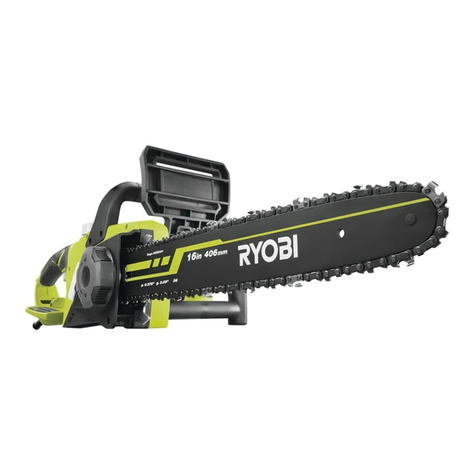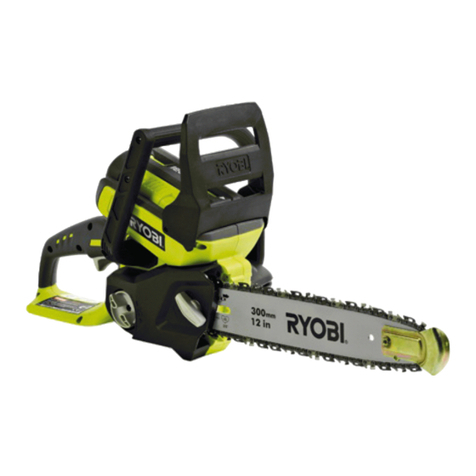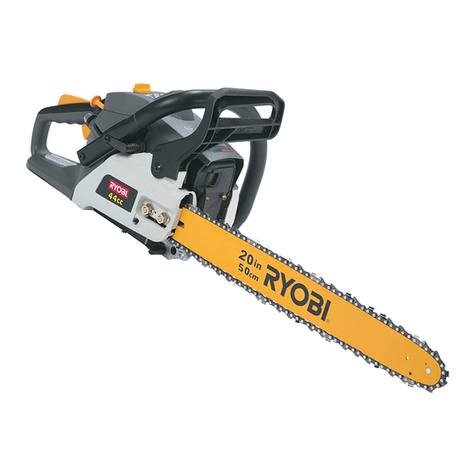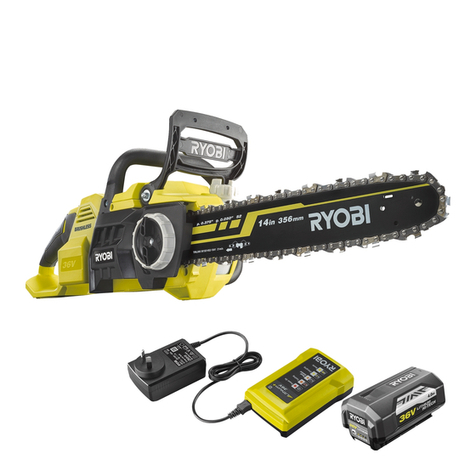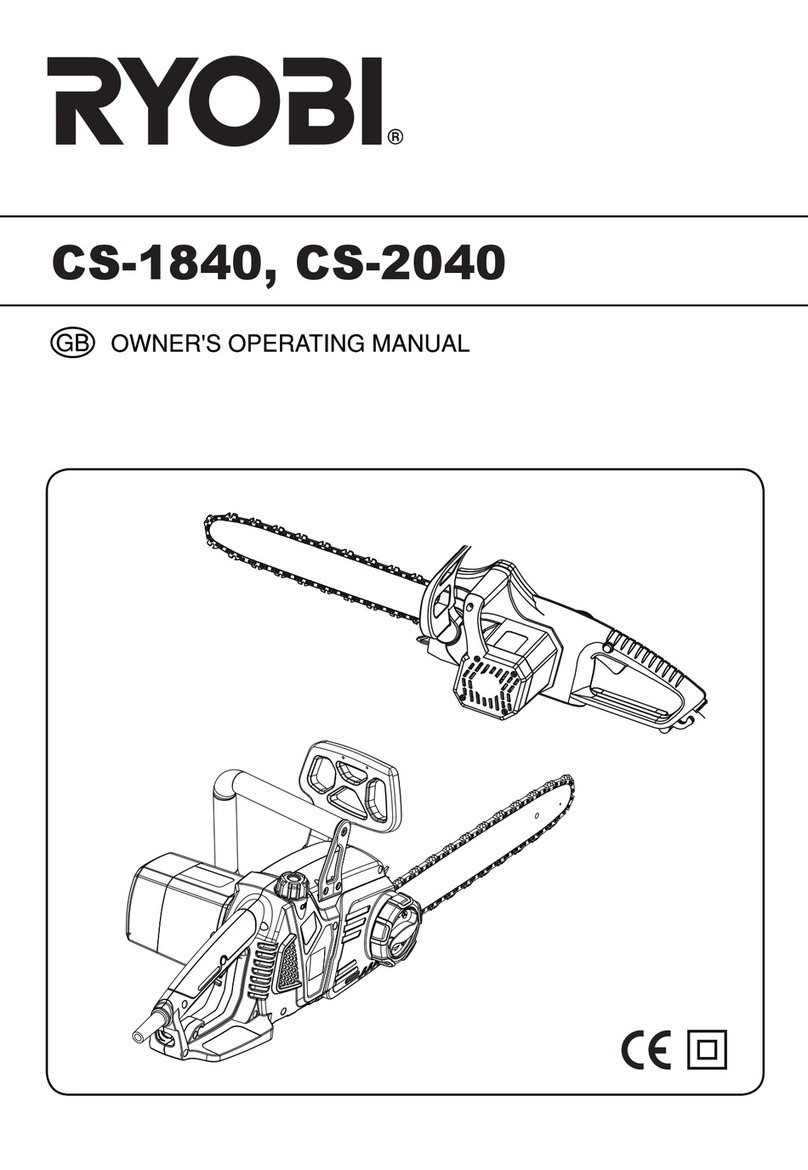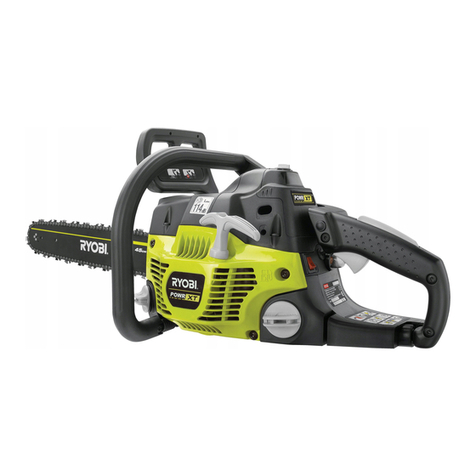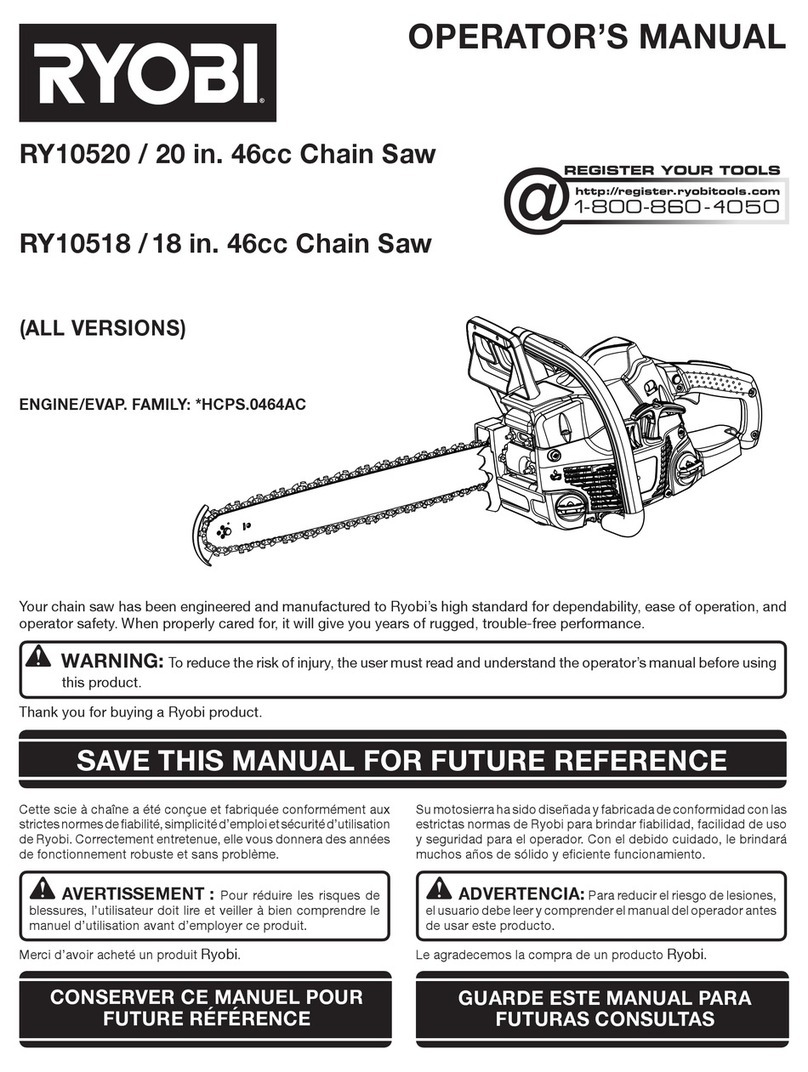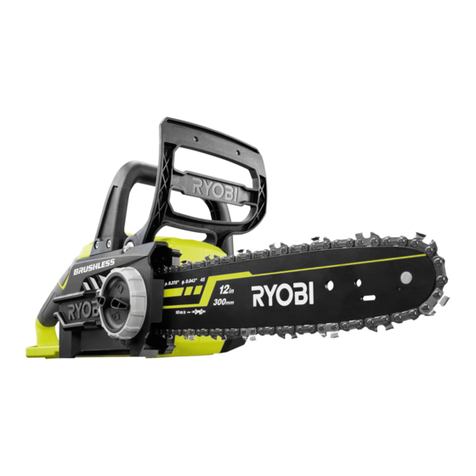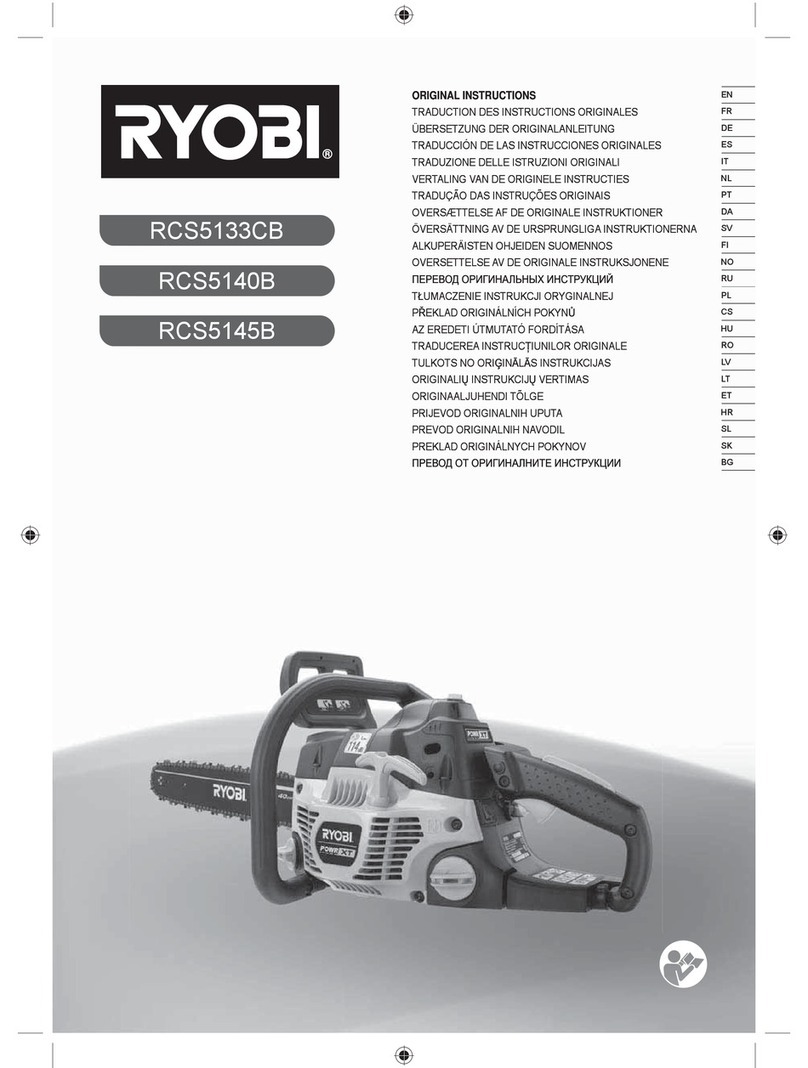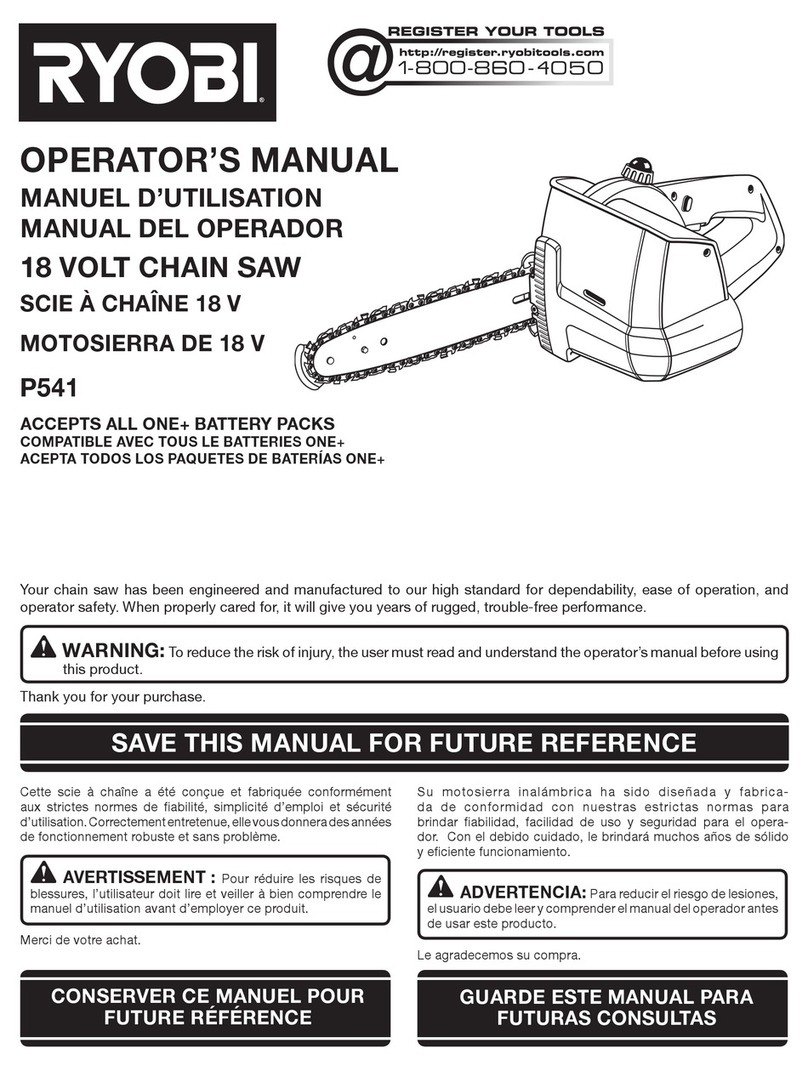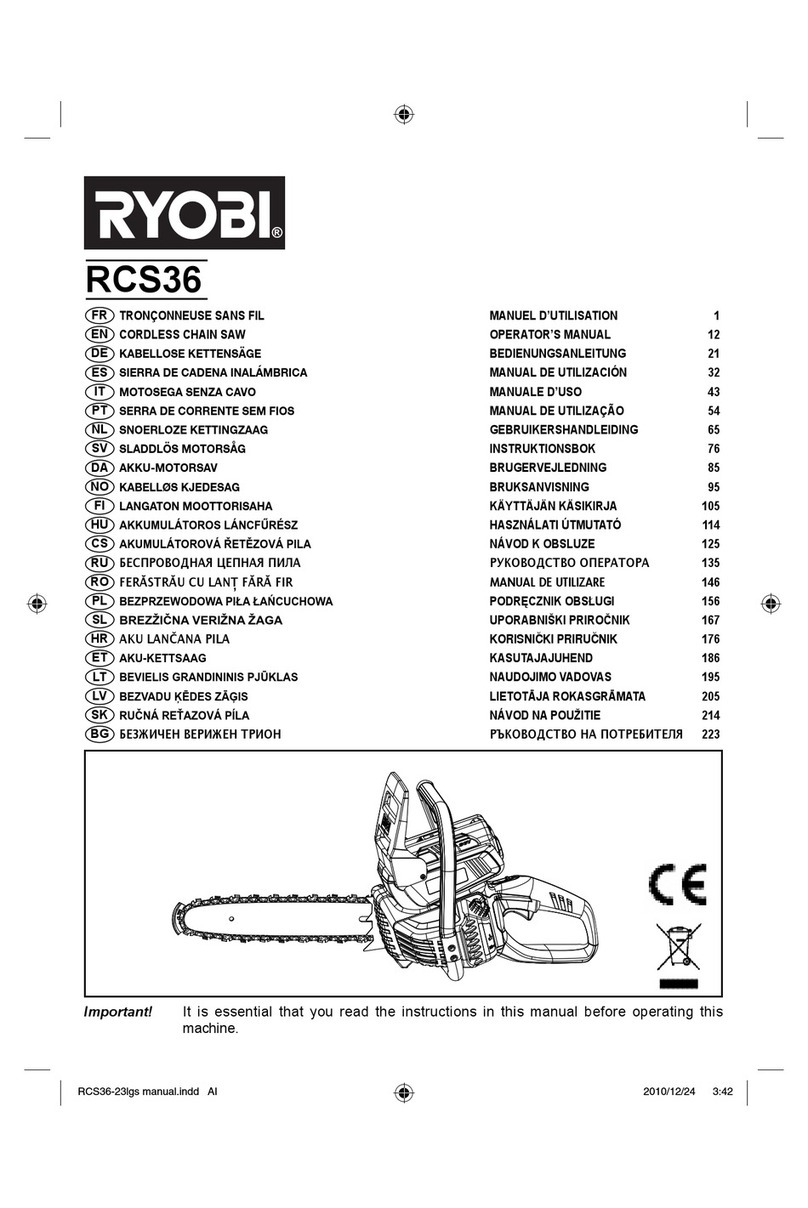
5
WARNING
When the throttle trigger is released and the engine is
running at idle speed, the saw chain must not move. If
it does continue to move there is risk of severe injury to
the operator. Do not use the product, have the product
serviced by an authorised service centre only.
CHECKING THE CLUTCH
1. Disengage the chain brake by pulling the chain brake
lever/hand guard towards the front handle until a click
is heard.
2. Allow the engine to run idle. Ensure that the saw chain
is not rotating. If the saw chain rotates while running at
idle speed, the clutch may be damaged. Do not use the
product. Have the product serviced by an authorised
service centre only.
3. Depress the throttle trigger half-way and run the product
at mid speed. The saw chain should rotate smoothly if
the clutch is in good working condition.
RESTARTING AFTER EXTENDED PERIODS OF HEAVY
USE
After using the chain saw for extended periods of time,
please let the product run in idle, with the chain brake
engaged for 3 to 5 minutes, allowing accumulated heat
of the engine to dissipate through the forced-air cooling
system.
This helps prevent a potential heat soak and thus potential
high stress of certain engine components (i.e. ignition
system and carburettor).
After complete shut-off of the engine you may experience
difculties restarting the chainsaw due to this condition,
which is completely normal. Allow the product to cool down
before restarting.
Causes and operator prevention of kickback:
Kickback may occur when the nose or tip of the guide bar
touches an object, or when the wood closes in and pinches
the saw chain in the cut.
Tip contact in some cases may cause a sudden reverse
reaction, kicking the guide bar up and back towards the
operator.
Pinching the saw chain along the top of the guide bar may
push the guide bar rapidly back towards the operator.
Either of these reactions may cause you to lose control of
the saw which could result in serious personal injury. Do
not rely exclusively upon the safety devices built into your
saw. As a chainsaw user, you should take several steps to
keep your cutting jobs free from accident or injury.
Kickback is the result of tool misuse and/or incorrect
operating procedures or conditions and can be avoided by
taking proper precautions as given below:
■Maintain a firm grip, with thumbs and fingers
encircling the chainsaw handles, with both hands
on the saw with your body and arms positioned to
allow you to resist kickback forces. Kickback forces
can be controlled by the operator, if proper precautions
are taken. Do not let go of the chainsaw.
■Do not overreach and do not cut above shoulder
height. This helps prevent unintended tip contact and
enables better control of the chainsaw in unexpected
situations.
■Only use replacement bars and chains specified
by the manufacturer. Incorrect replacement bars and
chains may cause chain breakage and/or kickback.
■Follow the manufacturer’s maintenance
instructions for the saw chain. Decreasing the depth
gauge height can lead to increased kickback.
INSTRUCTIONS CONCERNING THE PROPER
TECHNIQUES FOR BASIC FELLING, LIMBING, AND
CROSS-CUTTING
Understanding the forces within the wood
When you understand the directional pressures and
stresses inside the wood, you can reduce the “pinches”
or at least expect them during your cutting. Tension in the
wood means the bers are being pulled apart and if you
cut in this area, the “kerf” or cut will tend to open as the
saw goes through. If a log is being supported on a saw
horse and the end is hanging unsupported over the end,
tension is created on the upper surface due to the weight
of the overhanging log stretching the bers. Likewise, the
underside of the log will be in compression and the bers
are being pushed together. If a cut is made in this area, the
kerf will have the tendency to close up during the cut. This
would pinch the blade.
Felling a tree
See page 19 - 20.
When bucking and felling operations are being performed
by two or more persons at the same time, the felling
operations should be separated from the bucking operation
by a distance of at least twice the height of the tree being
felled. Trees should not be felled in a manner that would
endanger any person, strike any utility line or cause any
property damage. If the tree does make contact with any
utility line, the company should be notied immediately.
The chainsaw operator should keep on the uphill side of
the terrain as the tree is likely to roll or slide downhill after
it is felled.
An escape path should be planned and cleared as
necessary before cuts are started. The escape path should
extend back and diagonally to the rear of the expected line
of fall.
Before felling starts, consider the natural lean of the tree,
the location of larger branches and the wind direction to
judge which way the tree will fall.
Remove dirt, stones, loose bark, nails, staples and wire
from the tree.
Do not attempt to fell trees which are rotten or have been
damaged by wind, re, lightning, etc. This is extremely
dangerous and should only be completed by professional
tree surgeons.
■Notching undercut
See page 19 - 20.
Make the notch 1/3 the diameter of the tree,
perpendicular to the direction of the fall. Make the
lower horizontal notching cut first. This will help to avoid
pinching either the saw chain or the guide bar when the
second notch is being made.
